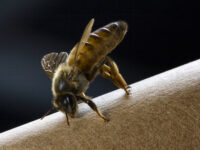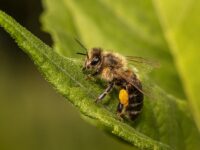What sets a group of monkeys on a mission to a new place? What compels large schools of fish to change direction from a predator? How do flocks of geese decide to land in the Fens or pick away at the grass on Centennial? On the individual level, researchers have explored decision-making capabilities, and studies have ranged from exploring self-control in cuttlefish to the memory-based choices of elephants. But beyond the study of individual animals, researching group dynamics and collective thought processes of other species presents many logistical problems for researchers. In large animal groups, it is incredibly challenging to monitor the collective movement of so many individuals, and such data is accompanied by complicated analysis. With the introduction of new technologies and algorithms, this area of research has recently grown, allowing for tracking and monitoring of many animal movements and interactions.
As tracking systems have advanced, researchers have created many novel methods for collecting mass amounts of group behavior data. More rudimentary technologies include stationary cameras, which can capture a variety of species in a wide range of habitats but present challenges in low-density areas where animals may be less likely to cross the view of cameras. Additionally, unmanned aerial vehicles (UAVs) allow for non-disruptive behavior monitoring. Data collected from UAVs can be used to observe the movement of entire groups of animals across vast distances and for lengthy periods of time. However, UAVs meet challenges when the species of interest is too small for the camera to capture. Like with stationary cameras, habitats can also cause difficulty — UAVs can’t record animals inside a dense canopy or in murky, opaque waters. Satellite imaging is another method used by scientists that can be beneficial for the study of migratory species and herds.
researching group dynamics and collective thought processes of other species presents many logistical problems for researchers.
For more detailed tracking, including observations of behavior, body orientation, and proximity between animals, bio-loggers or animal-mounted sensors can be used. Inertial sensors, measuring speed and acceleration, can help define specific movements, such as body orientation and gaze. GPS tags can provide precise location information to observe individual interactions, leadership behaviors, or even descriptive traits about an individual. These devices are typically placed on captured animals and can be worn as collars, backpacks, or even attached via suction cup. Other bio-loggers can be internally implanted, such as passive integrated transponder tags. These devices act as lifetime barcodes and provide information when a tagged animal passes by automated tag readers and scanning systems. Finally, researchers can use data collected from the perspective of the animal itself, including animal-mounted camera footage, accelerometers that pick up body vibrations, and microphones that record vocalizations and environmental sound.
Animal behavior data can be tricky to review objectively. Researchers may hypothesize as to why a group of animals would make a certain decision, and it can be challenging to separate those expectations from recorded behaviors. Algorithms have been developed to eliminate this bias — some methods automatically model body orientation or allow time-consuming data, such as acoustic observations, to be processed quickly. Machine learning techniques allow for the automatic classification of animal behaviors without direct human observation.
This technologically aided behavioral observation has allowed researchers to collect massive amounts of animal behavior data, revealing the seemingly unpredictable and disorganized patterns and motivations for collective animal behaviors. For example, researcher Ariana Strandburg-Peshkin of Princeton University studies collective behavior and leadership distribution amongst groups and observed a baboon troop using high-resolution GPS animal tracking and habitat imaging using UAVs. Her team determined that the troop commutes to important foraging sites using roads and the individuals prefer to move into areas recently occupied by their troopmates. Emphasizing the importance of avoiding human disruption of these animal habitats, the researchers employed collective behavior technology to identify areas of importance to the troop of baboons. Given their preference for locations where other baboons had recently been, it is crucial that human activity doesn’t force the baboons to move to a new location, disrupting their natural foraging and sleeping behaviors.
Through technological advances in videography and tracking, collective behavior data can now reveal important sites and movement patterns for endangered species. How is leadership distributed amongst baboon troops, and what characteristics define a leader? These questions can be answered using these tracking technologies and can reveal natural behaviors amongst similar species. Animal behavior can also provide insight on human tendencies. Humans are animals too — and we have a lot to learn from the collective behavior of other animals in our world.
Image Source: Pxfuel






